How to grow and care for a fiddle leaf fig
Looking to nurture a spectacular indoor plant? The ever-popular fiddle leaf fig will bring timeless style to your interiors
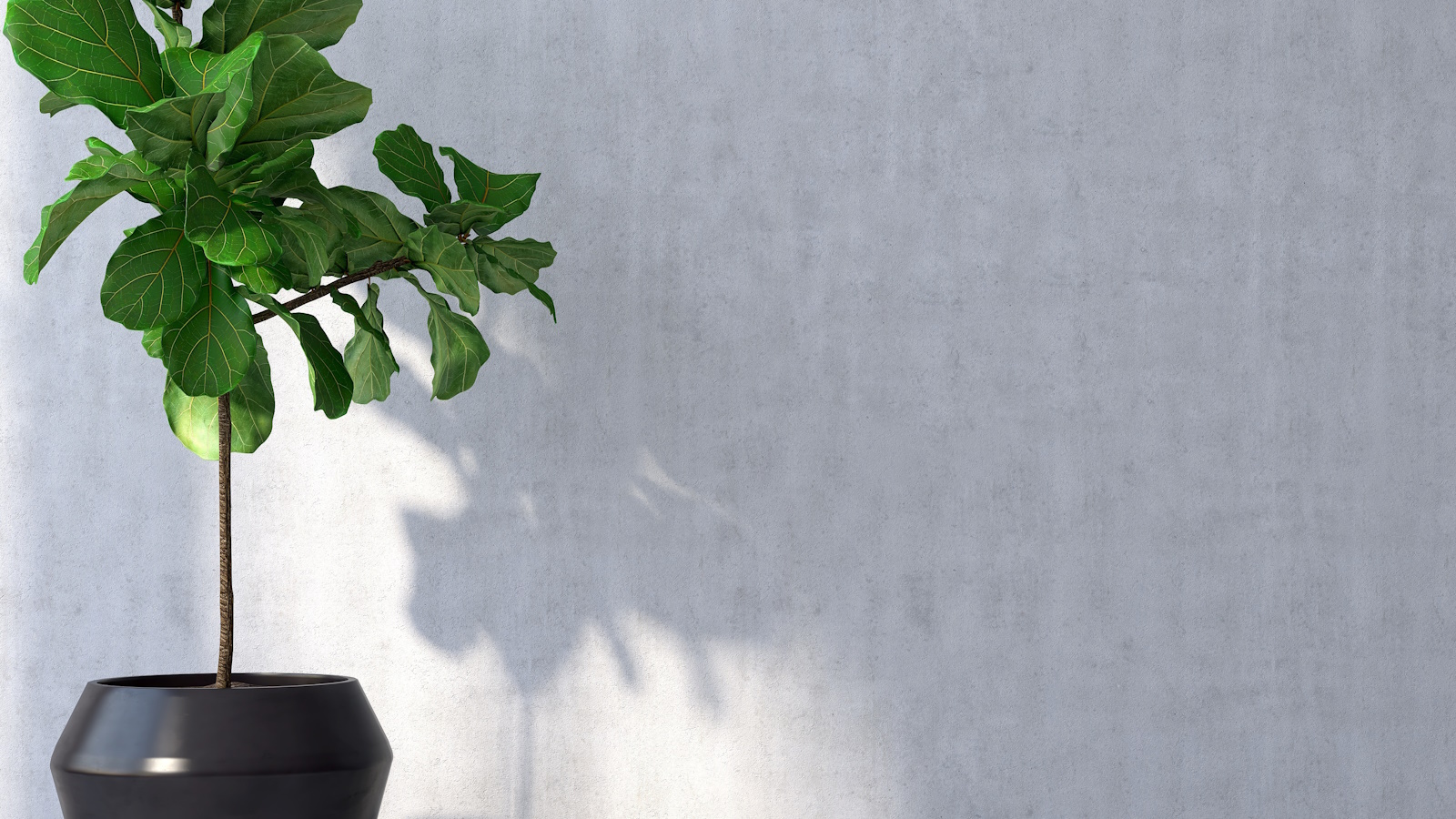

Learn how to grow and care for fiddle leaf fig and you will be rewarded with a majestic house plant that will add effortless style to any space in your home.
Originally from the rainforests of West Africa, this beautiful fig can reach heights of up to 45ft in the wild and an impressive 6ft indoors. As the name suggests, the distinctive leaves are large in size, with undulating edges and a nipped middle, not dissimilar to a fiddle or lyre. Leathery in texture with pronounced veins, this single or multi-stemmed plant is one that makes a real impact in any room.
Not solely an indoor plant treasured for its good looks, the fiddle leaf fig is also prized as one of the best air cleaning indoor plants.
Tempted to give one a try? We provide everything you need to know, including advice from the experts, to ensure your plant thrives.
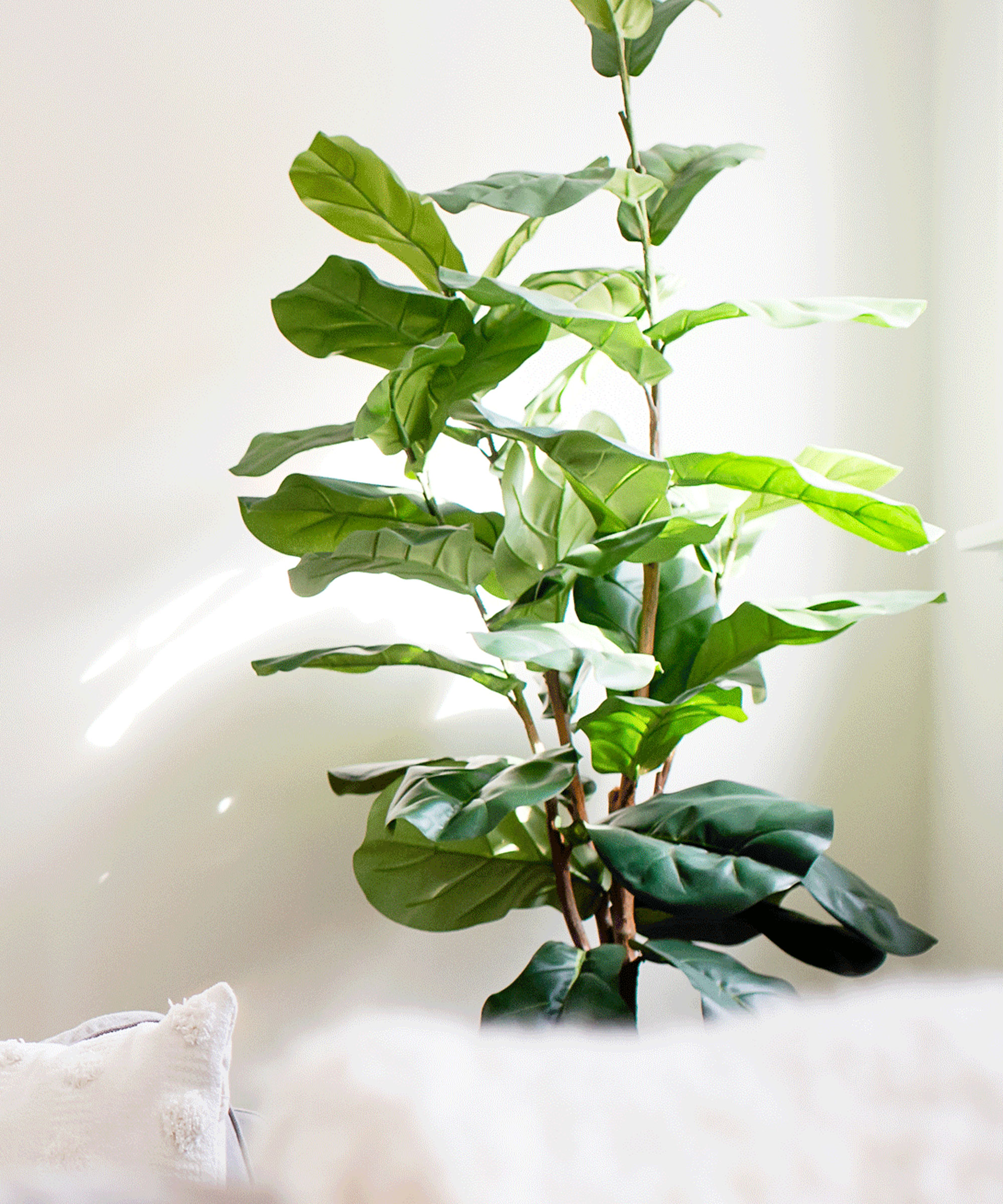
How to grow and care for fiddle leaf fig
We think fiddle leaf figs are one of the best low maintenance indoor trees. Discover what you need to get right to ensure your plant stays healthy and thrives in your home.
Get temperature and humidity levels right
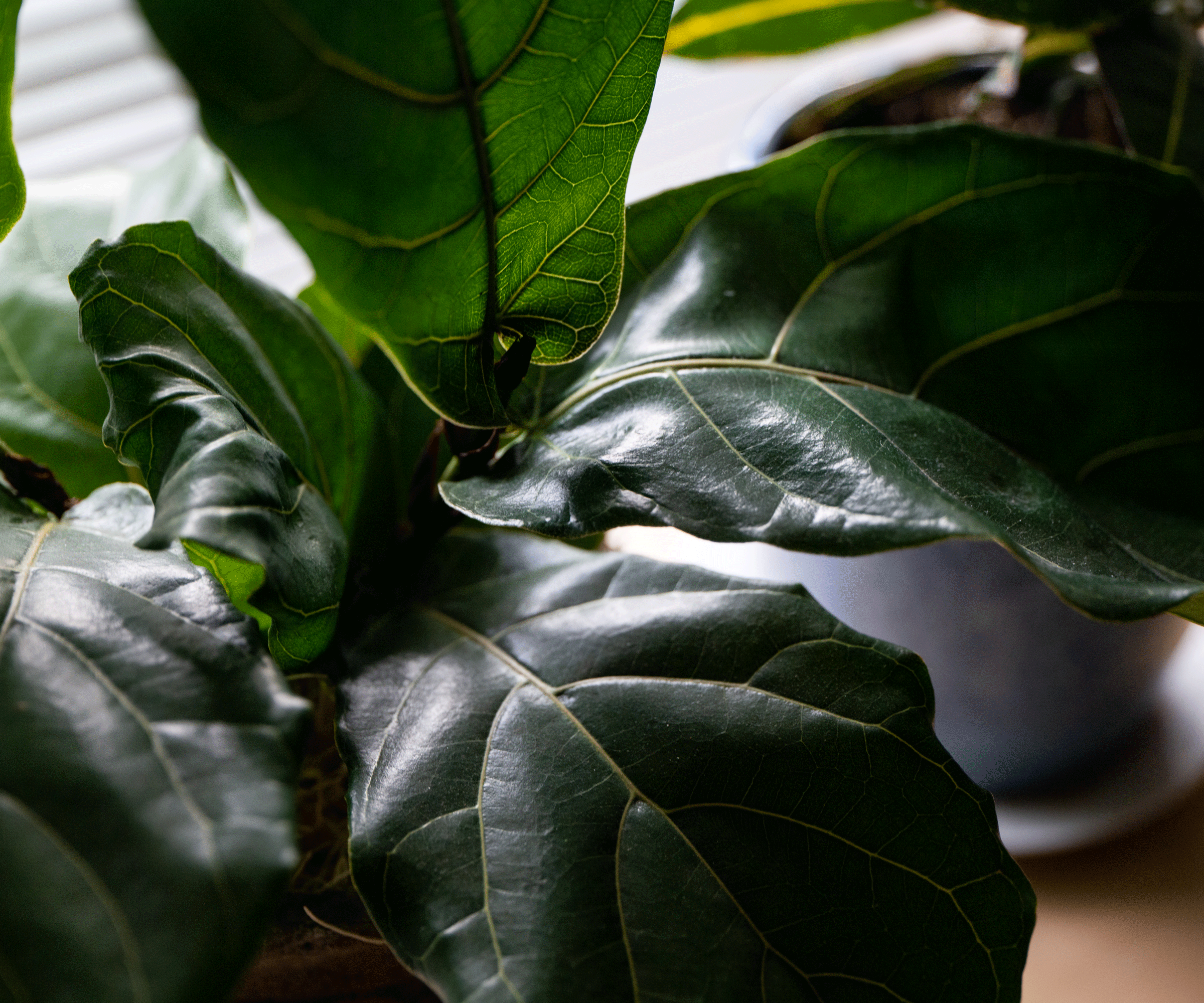
Growing wild in lowland tropical climes, fiddle leaf figs are pretty happy in average home temperatures of around 65-80F.
This plant is partial to humid conditions, and will enjoy frequent misting on its leaves to keep them looking luscious and long. You might also consider placing a humidifier in the same room as your fiddle leaf fig to keep it happy.
Fiddle leaf figs do not like temperature fluctuations, or to be moved too much. If you do have to move your plant, be prepared for some leaf drop until it is acclimatized again in two to three weeks.
Ensure light levels are correct
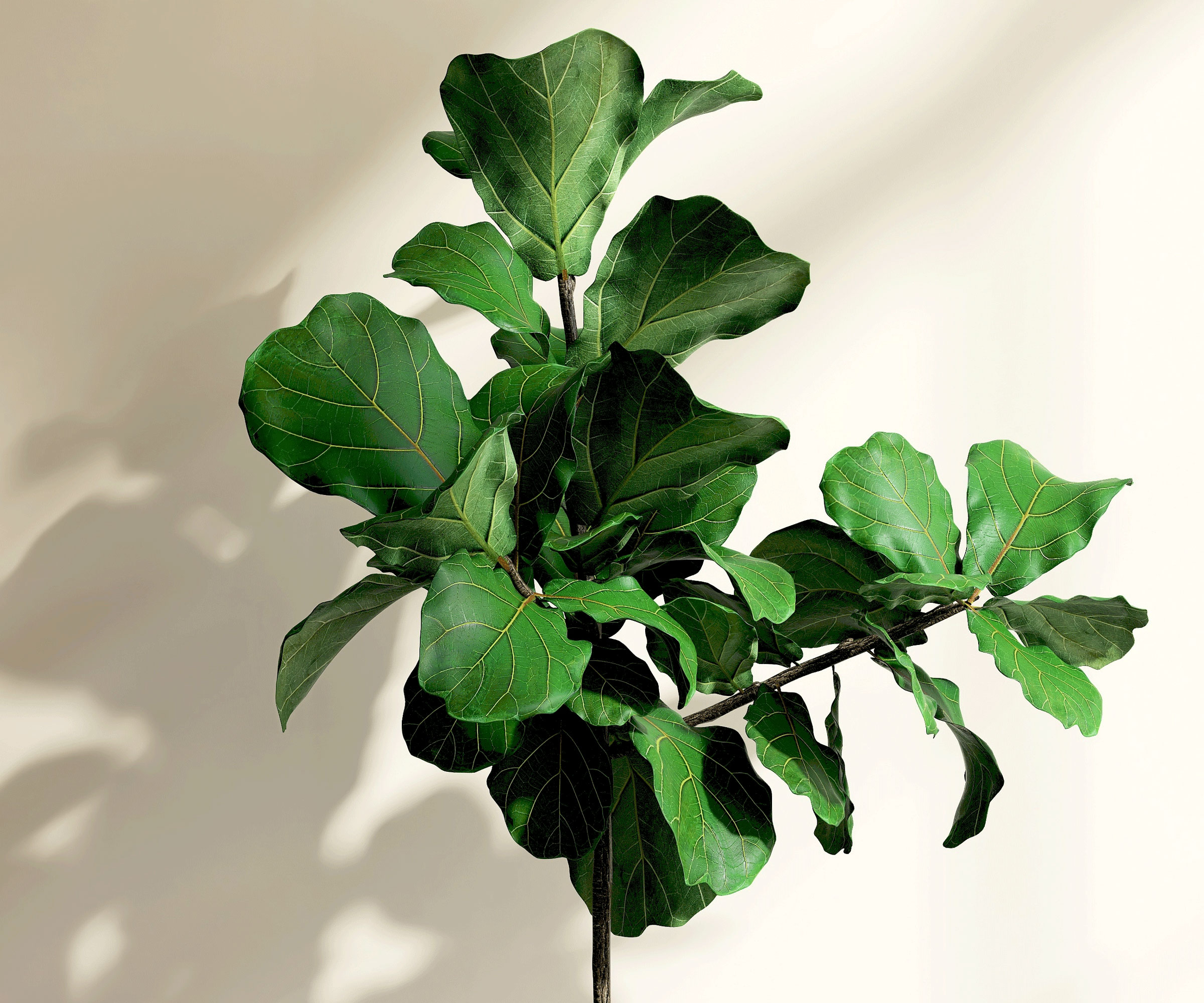
Like many figs, this eyecatching plant likes bright but indirect light to keep its large leaves in top condition. If they don’t receive enough light, they will gradually turn brown or yellow and eventually drop.
Position the plant a couple of feet away from a window but do be careful not to let strong sunlight fall directly on the foliage for any length of time as they will burn and scorch.
Know when and how much to water fiddle leaf figs
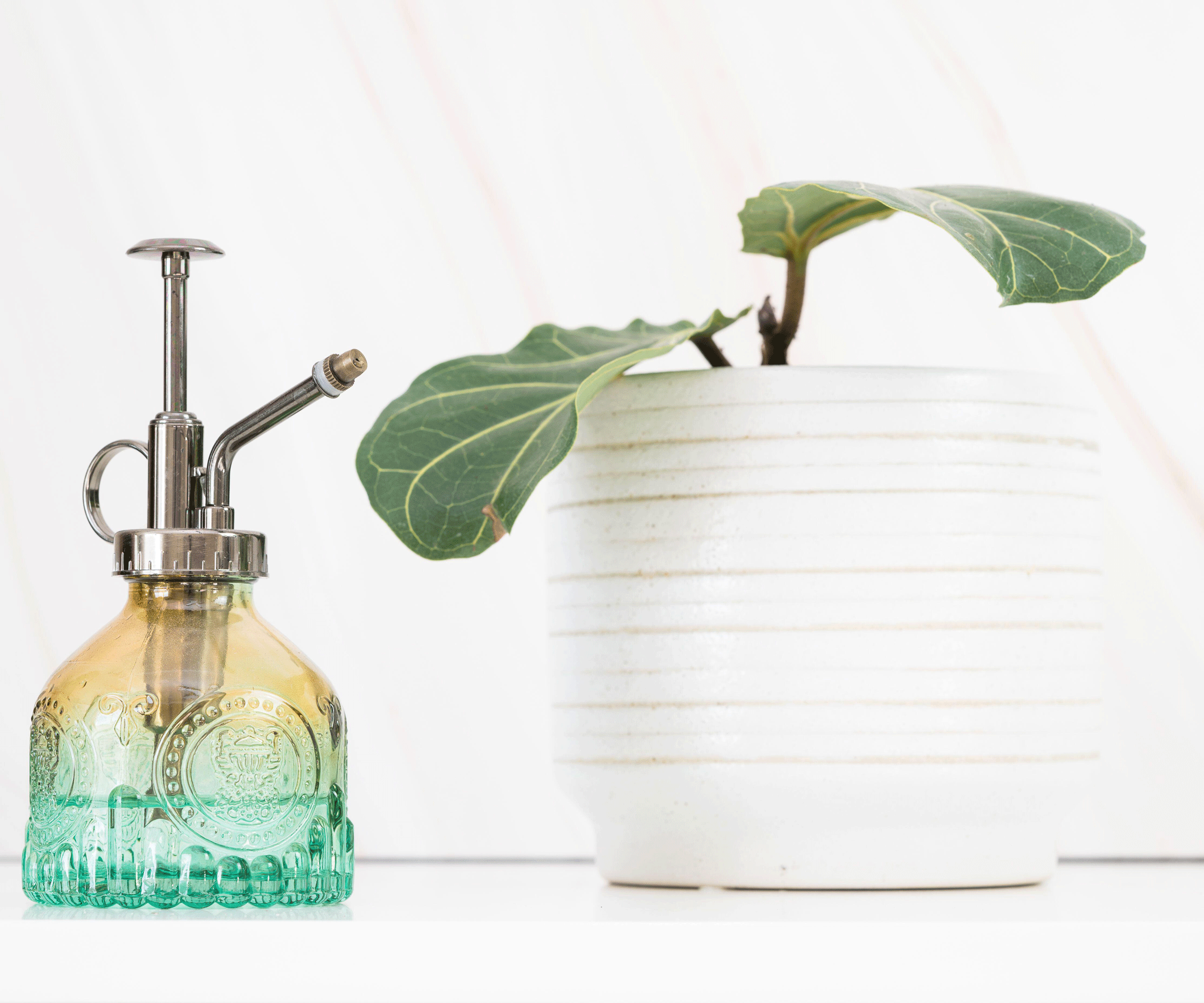
The most common cause of plant problems, watering can be a mystery to many plant carers but understanding where they grow in the wild can help know when to water plants considerably.
‘When watering a fiddle leaf fig tree, err on the side of underwatering rather than overwatering,’ says Claire Akin of Fiddle Leaf Fig Plant Resource.
‘These plants are drought-tolerant and don’t like soggy soil, so allow the top inch of soil to dry out before watering again. Tropical areas typically get consistent moisture, but not always a lot of it at once, so keeping your tree’s soil semi-moist will keep it happy. Using a moisture meter, such as this one from Amazon, can easily take all the guesswork out of when to water your fiddle leaf fig.’

Claire Akin created the Houseplant Resource Center as a place where fellow enthusiasts can learn tips and tricks for growing gorgeous plants without any of the stress. She’s also the proud owner of 18 beautiful varieties of houseplants, including six fiddle leaf fig plants.
Choose the correct compost
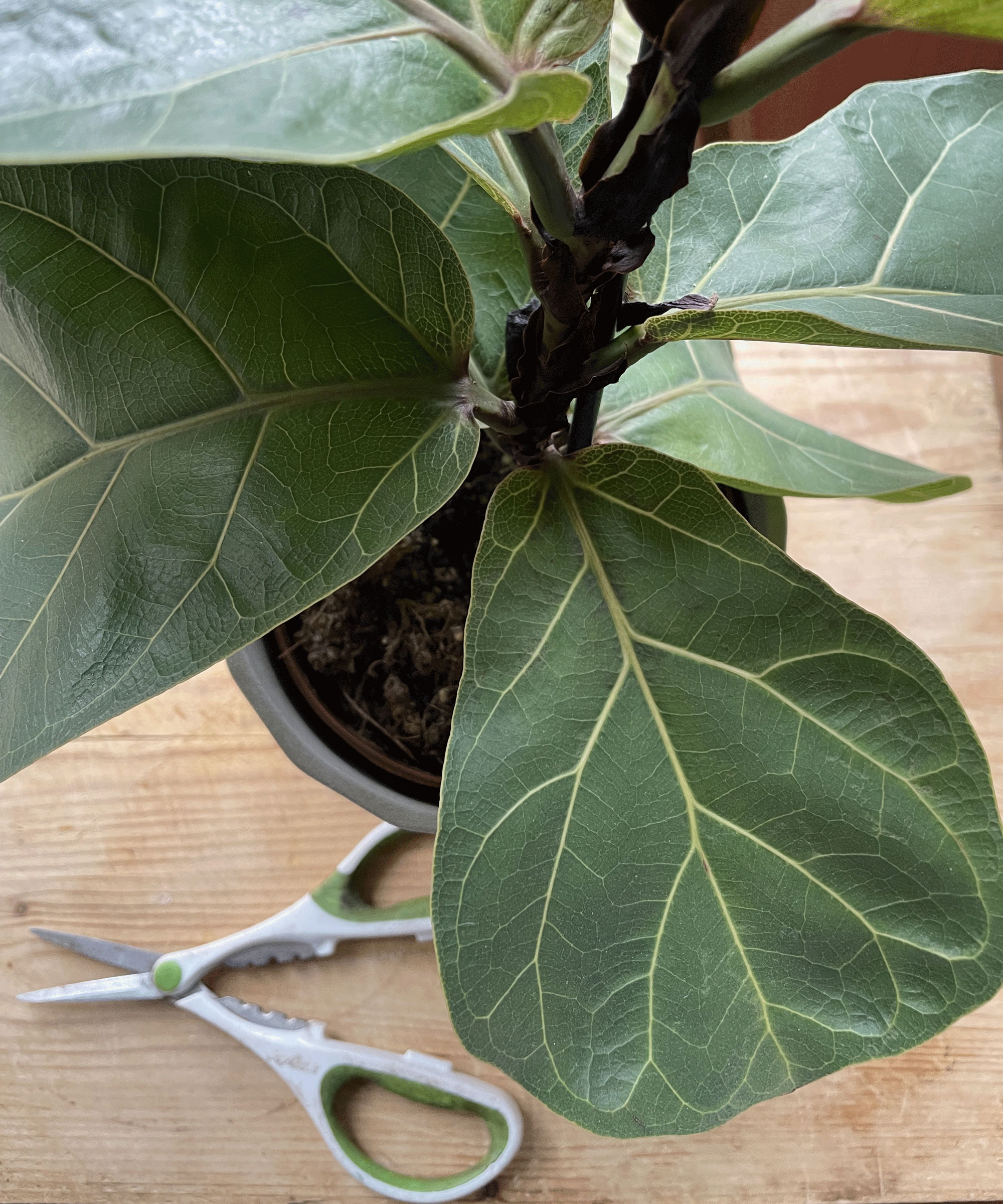
Free draining soil is another important factor. If you do not give your fiddle leaf fig adequate drainage this could lead to red and brown spots appearing on the leaves, and other common problems.
This happens when the plant cell walls cannot contain the excess water any longer and burst, causing the reddish tint. This is known as edema or oedema in scientific terms. If this happens, then you’re either watering too much or the water is accumulating in the soil, and your plant has poor drainage.
Choose a potting compost that is slightly acidic and contains perlite, charcoal, sand to help with drainage.
Understand when it's time to repot a fiddle leaf fig
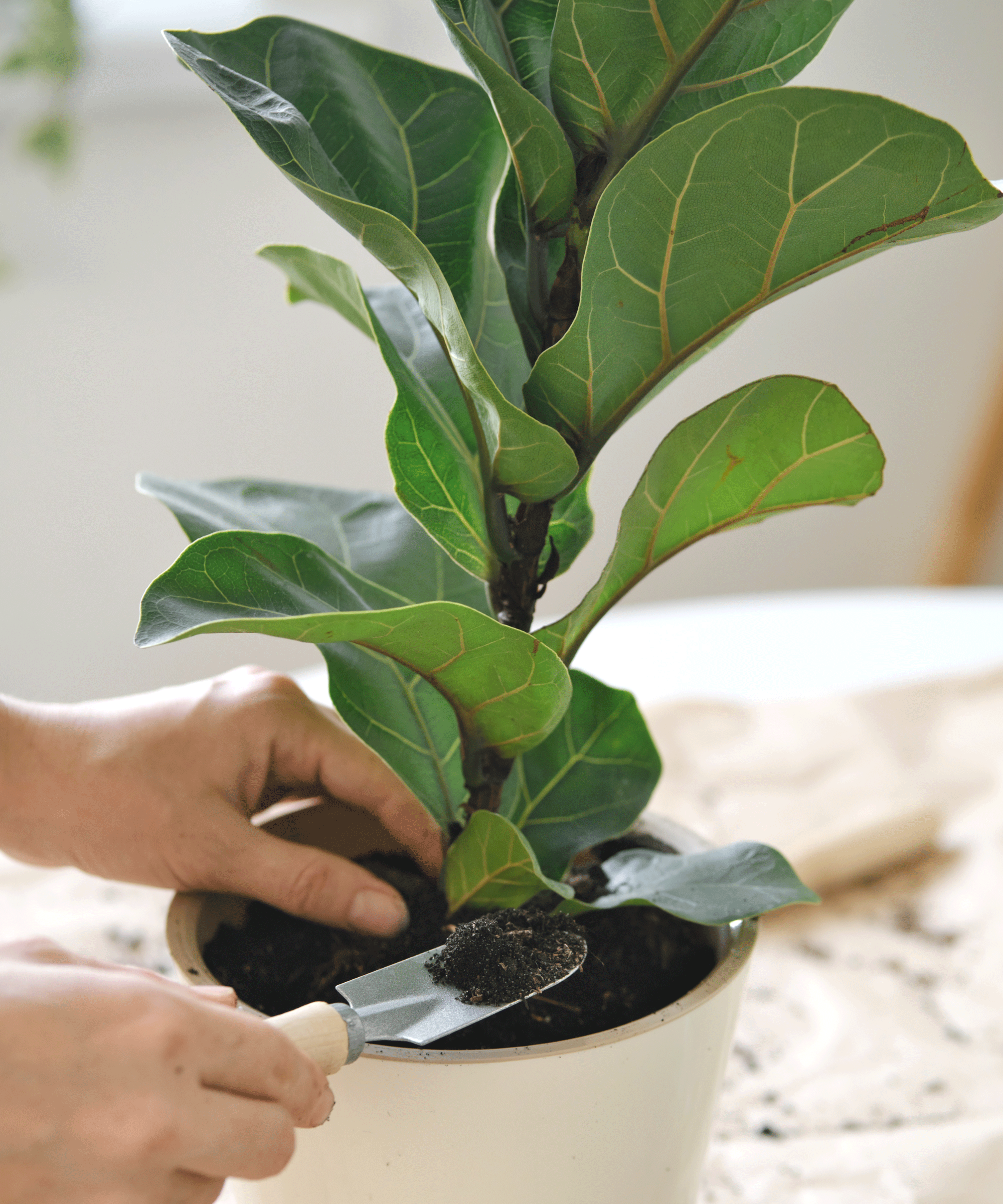
If you spot roots poking out of the drainage holes in the plant pot or emerging from the soil’s surface, then it’s time to repot. Not a particularly tricky task, but it is worth getting the timing right. Repotting is best done during the growing season – spring and summer – as this will give the plant a chance to settle into its new surrounding before entering its dormant spell.
Start by tipping the plant upside down and carefully sliding off the nursery pot. Take a close look at the root system. If you spot any mushy brown roots then this is a sign of root rot, and these need to be snipped off. If roots simply look congested, then it’s time for a larger pot.
Choose pot that is 1-2 inches (2.5-5cm) bigger and make sure it has large drainage holes. This is likely to be a plastic nursery pot which can then be slipped into a decorative container minus the holes in the base.
Using a free draining compost, fill a quarter of the pot with soil before placing the plant in upright. Fill around the root ball with more compost, firming slightly as you go.
Continue until the soil is just below the pot’s rim. Water and leave to drain before popping the plant back in its place.
FAQs
How do you clean a fiddle leaf fig's leaves
Cleaning a fiddle leaf fig’s large leaves can be hugely beneficial as it increases both photosynthesis and respiration. Wipe gently with a damp soft cloth being careful not to split or damage the foliage.
No time for wiping leaves down? Treat your fiddle leaf fig to a shower. Place under the showerhead and give the entire plant a good drenching in tepid water. Be sure to let the plant drain thoroughly before popping back in its decorative pot.
You can keep your plant in top condition by knowing how and when to prune a fiddle leaf fig - then propagate your cuttings to create new plants to add to your collection or delight your friends and family.
Sign up to the Homes & Gardens newsletter
Design expertise in your inbox – from inspiring decorating ideas and beautiful celebrity homes to practical gardening advice and shopping round-ups.

Journalist Jill Morgan has spent over 20 years writing and editing gardening, interior and property features. Titles she has worked on include The English Home, House Beautiful, Ideal Home, Houzz and Modern Gardens and she writes regularly for H&G as a Contributing Editor. Whilst she is a dab hand at renovation projects and DIY, she is happiest when out digging in the garden or planning a new border.
-
 I’m an HVAC technician, and this is when I turn my AC on each year – plus 5 checks I always do beforehand
I’m an HVAC technician, and this is when I turn my AC on each year – plus 5 checks I always do beforehandSave yourself an AC hassle by running my checks and turning it on before big heat hits
By Josh Mitchell Published
-
 This simple marble hack elevates my budget-friendly wooden kitchen countertops and prevents the dreaded water damage for way less than you’d think
This simple marble hack elevates my budget-friendly wooden kitchen countertops and prevents the dreaded water damage for way less than you’d thinkThis design trick looks expensive, solves a problem, and was the easiest decision I made during my kitchen reno
By Charlotte Olby Published